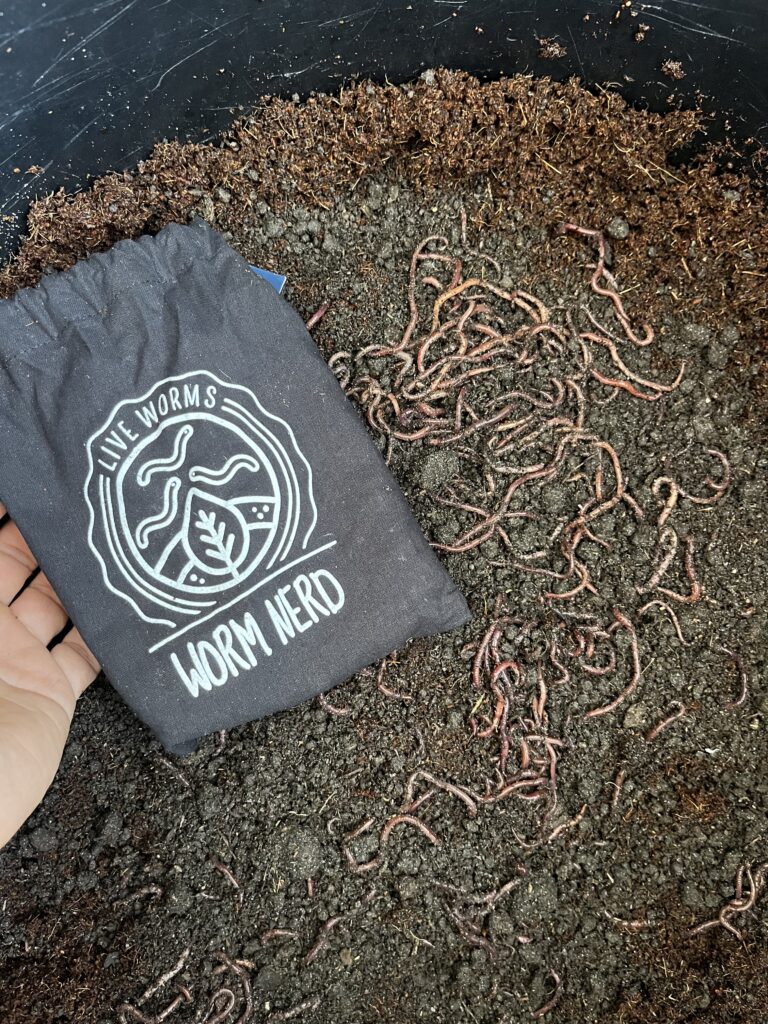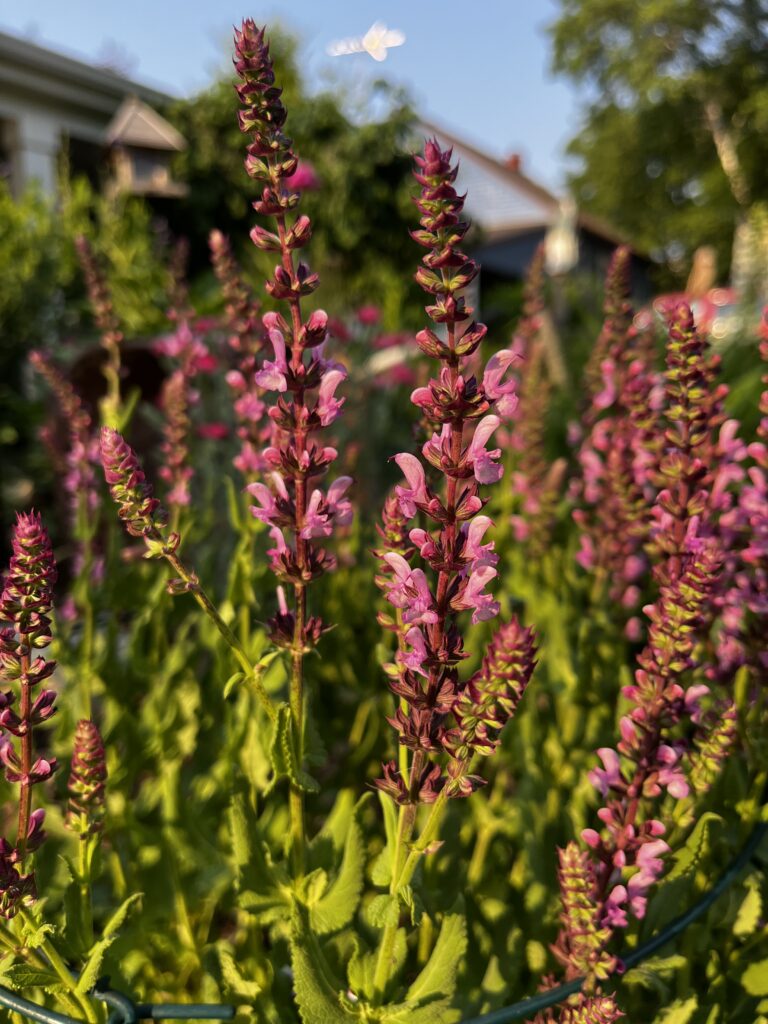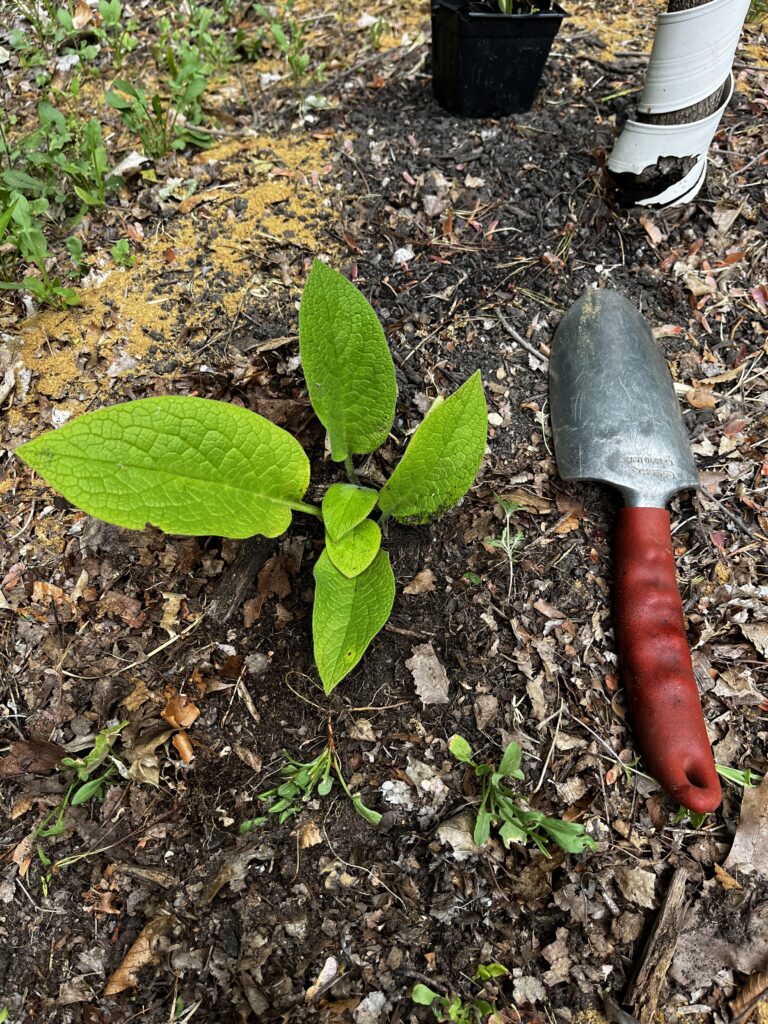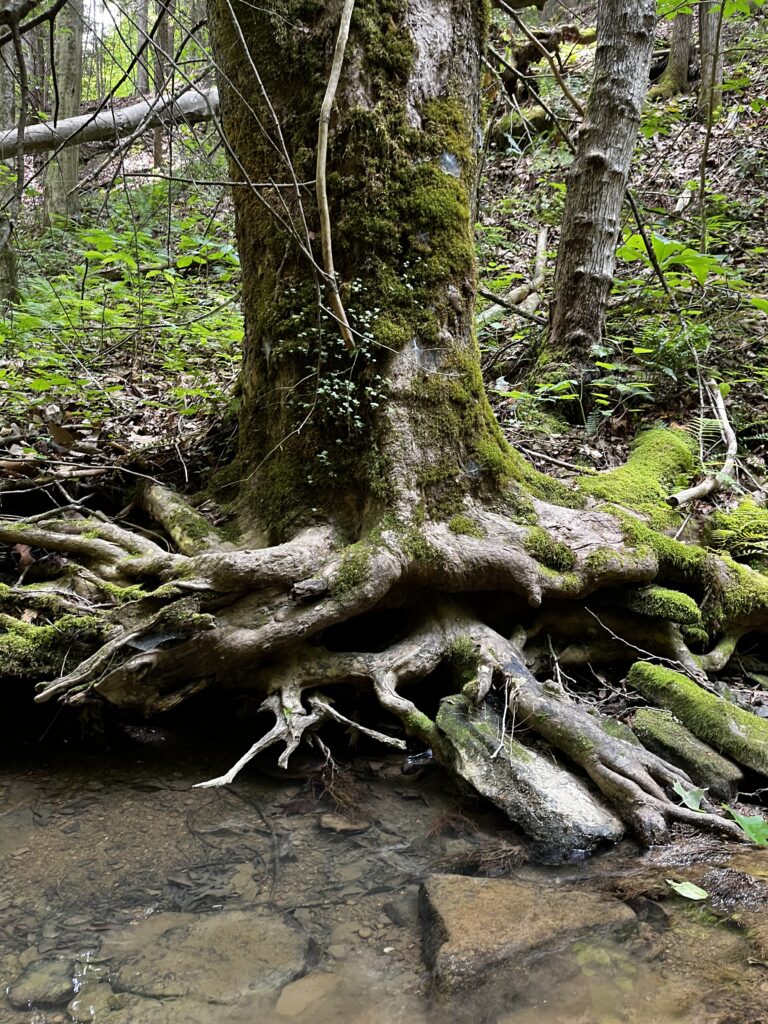June Gardening To-Do List
What should I be doing on my property in the month of June if I live in USDA Zones 3-8? Have you ever wondered what other organic regenerative gardeners are doing right now in their yards or on their properties? (Looking for USDA Zones 9-11, click here) Well, here’s a little list to give you a jump-start for what you be doing for your June Gardening To-Do List.
In the Garden
- Plant more: Kale, lettuce, cucumbers, summer/winter squash Staggering your plantings will help diversify harvest times and ensure a healthier crop. If you have extra space, plug in some more annual flower seeds like sunflower, cosmos, zinnia, or nasturtium.
- To Plant: Corn, cucumbers, beans, squash, pumpkins
- Tomatoes: Plant another round of them to diversify harvest throughout the season. In the midwest, where we often have hard clay soil, you can actually increase your root systems for greater water intake by following these easy steps. First, pinch off the bottom layers of leaves, only leaving 2 – 3 sets on the top of the seedling. Second, plant the seedling all the way up to the top of the plant leaving only the remaining leaves above the ground. Because tomatoes will grow roots from the hairs on the stem, the entire stem under the soil will produce roots. This should only be done with seedlings up to 6-8″ tall. Lastly, be sure to give it a good watering from your rain barrel when you finish.
- Plant extra bean seedlings everywhere you can. Yes, everywhere you can. The bush beans are excellent right off the plant (raw), can be cooked, and some can be dried. The best part, in my humble opinion, is that the green beans are nitrogen fixers and help repair the soil.
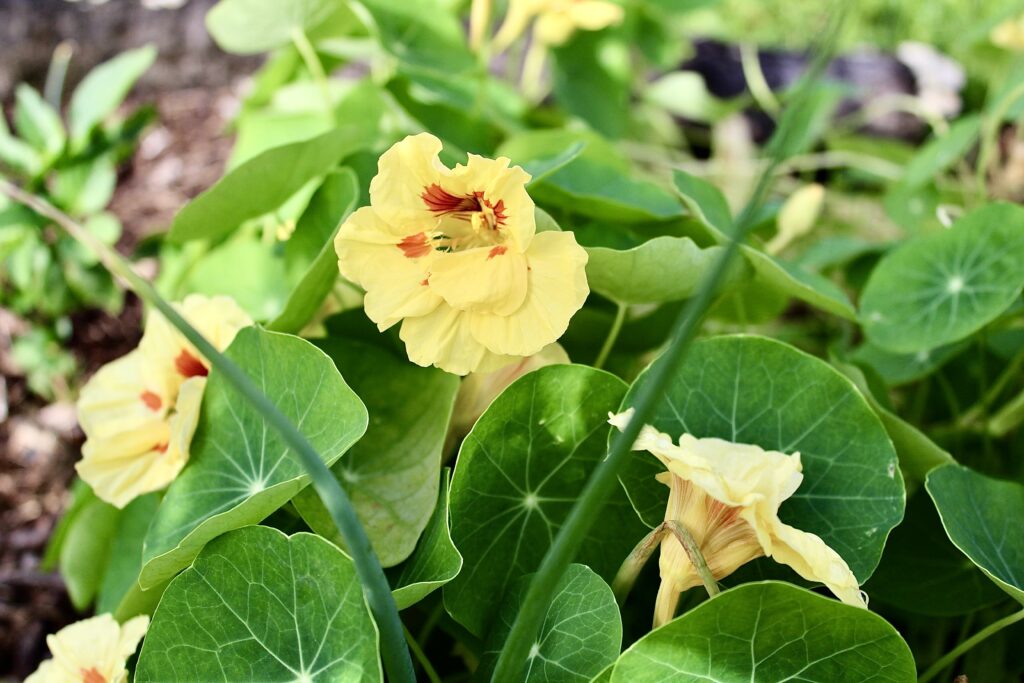
TIP
Plant nasturtiums around the garden and in the food forest. They are a two-fold insectary plant. First, they will attract the good insect and pollinators, especially the braconid wasps (which defend against the bad guys). Secondly, they are an insect trap for aphids, so if you see your nasturtiums covered…. consider them a sacrificial crop to protect your veggies.
In the Greenhouse
- Put up shade cloth: We are essentially finished with the “Greenhouse” season, but if you have a shade cloth, you can actually open up all the windows now and put the shade cloth over the top. This will allow you to start micro-greens and other later season veggie starts. If using a shade cloth, you can also use the opened greenhouse for your indoor tropical plants to give them a season outdoors. Just be sure to pay attention to your watering!
- Clean and sterilize the plastic pots used this winter / spring
- Set mouse traps to control critters
- Hang fly traps to control aphids, flies, and other pests
- Fertilizing: It’s crucial to give your gardens and food forest what they need! Focus on nitrogen this month. Consider blood meal applications in both the veggie garden and food forest. If you can’t find that… try bonemeal instead. It’s often best to fertilize right before a rain in order to water it in nicely.
In the Food Forest
- Ground Cherry seedlings can go into the ground. Plant them around the base of trees to provide shade for the root systems, but allow enough light to get through to produce a harvest. These will often self-seed, so plant in an area where you are ok with them spreading. However, the taste of these berries is incredible, you will not regret planting them.
- Herbs around fruit trees: Woody and smelly herbs are great at two things: keeping pests away (deer and bad bugs) and attracting native bees for pollination. Wait, I lied… three things. They are also a great ground cover under the young fruit trees. Plant yarrow, bronze fennel, dill, oregano, thyme, chives, or garlic chives in clusters around the base of each fruit tree. Let them spread and grow wild.
- Harvest elderberry flowers: If you are making elderflower tinctures, teas, or wine – now is your time to harvest! Make the good stuff when flowers are at their peak.
- Apply late spring foliar spray, if you have not done so already.
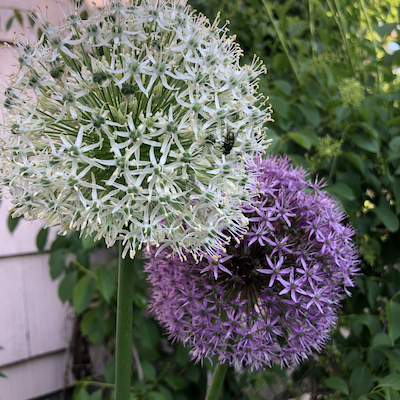
Enjoy your spring pollinating bulbs that you planted this winter.
If you forgot… here’s an article of when you could plant this this coming winter.
In the Shed
- Tool check: Now that your tools are up and running, give them a check over before the summer months hit. 1 – Check oil levels. 2 – Check air filters. 3 – Add a bit of Seafoam to the gas to help clean things out a bit.
- Set mouse traps and keep any animal feed sealed and contained.
- Make a tool cleaning bucket: Fill bucket with sharp play sand. Add oil motor oil, cheep cooking oils, etc until the sand is “damp”. Stab shovels, hoes, pitch forks in and out a few times to clean off dirt and give the metal a nice oiling to keep them from rusting after each use. Garden spades and trowels can be kept in the sand bucket. There is a video tutorial for this in Patreon.
Poultry and Livestock
- Poultry: Many folks who bought the spring chickens are now free ranging their birds. They are not laying yet, so do NOT give calcium. Stay on a great grower feed until the first eggs arrive. My preference is a high protein feed with lots of seed varieties. Personally, prefer to mix and ferment my own feed. Here’s my recipe.
- Quail: It’s starting to get hot, to be sure to keep their water filled at all times. It helps (once a week) to add a tsp of apple cider vinegar to their waterer. It will keep them healthy and active. As you weed the garden, you can also give them an occasional worm for additional protein in their diet. Their cooing and songs will be as nice of a reward as the healthy eggs they will produce.
- Deworming: Use 1 tablespoon of Basic H in a 5 gallon waterer (1tsp per gal) for chickens. Add 1.5 cups to a 100gal waterer basin for cattle and horses. Available in bulk (much cheeper for farm use) This should be their only water source for two days.
In the Pasture
- Plant last warm season crops: Alfalfa, clover mix, buckwheat, Sunn Hemp
- Plant final pasture edge (ecotone) species: Sunflower, buckwheat, comfrey, millet, milo, sorghum
Around the House
- Keep South and West facing shades closed during the day time in order to block out the hot sun.
- Open up the windows on cooler nights to help air out the house and let in fresh air.
- Replace your AC air filters and clean out the vents with a shop vac.
- Power wash cement, walkways, sides of house, shutters, wood decks, and outdoor furniture.
- Clean outdoor windows and doors (I use Basic H for this)
- Apply UV protectant to your recreational vehicles (boats, car interiors, RV’s, decals, etc.
In the Perennial Flower Beds
- Transplanting: It’s the chance to move perennials for a few months. Once the Midwest summers get hot, it’s really a challenge to transplant your perennials without over stressing them too much. Now is a GREAT time to transplant coneflowers, yarrow, black-eyed Susans, penstemons, etc.
- Share plants that you are dividing and trade with friends.
- Cut back mums: Yeah, go to town. Cut them back quite a bit. Leave only about 1/3 of the plant. You do NOT want this to develop buds yet, so if you see them forming again – give it a hair cut.
Ideas for Kiddos and Family Activities
- Spring Foraging: This month you can look for wild blueberries, haskap, honeyberry, morels, chicken of the woods, and even some rosehips starting! When brining kiddoes into nature, always stress, “Do NOT put anything in your mouth unless you ask an adult first.”
- Make Walking Sticks: Older kids can carve the bark off sticks to make them smooth, but younger kids can paint with acrylic paints. Be sure to clear coat spray them when finished so the paint doesn’t come off later. Put the walking sticks on the porch so they are on-hand for every adventure.
- Wild Bird Feeding
- Set out orange halves and grape jelly for the arriving orioles
- Put hummingbird feeders out on April 15th (never use the kind with red dye), and be sure to change the water in them every week.
- Hang a new birdhouse for spring nesting season
- Add white millet to feeders to attract indigo buntings (bright blue birds)
- Local Farm Visit: Many local farms offer free tours, kids activities, etc. Look up a local farm to visit in your area and give your kiddos exposure to the animals, crops, and fruit trees.
Keep Learning and Growing!
During these hot summer days, it’s also a great time to keep learning and growing. Consider finding a new Podcast or even join us on Patreon for lots of on-going classes, PDF files, and other documents to help you grow on the go. We are also offering a FREE 7-day trial on Patreon, so you can see if the content there is a good fit for you and your learning style.
Patreon includes homestead mentorship with Kris, LIVE chat and help, and a variety of access to our entire resource library.




